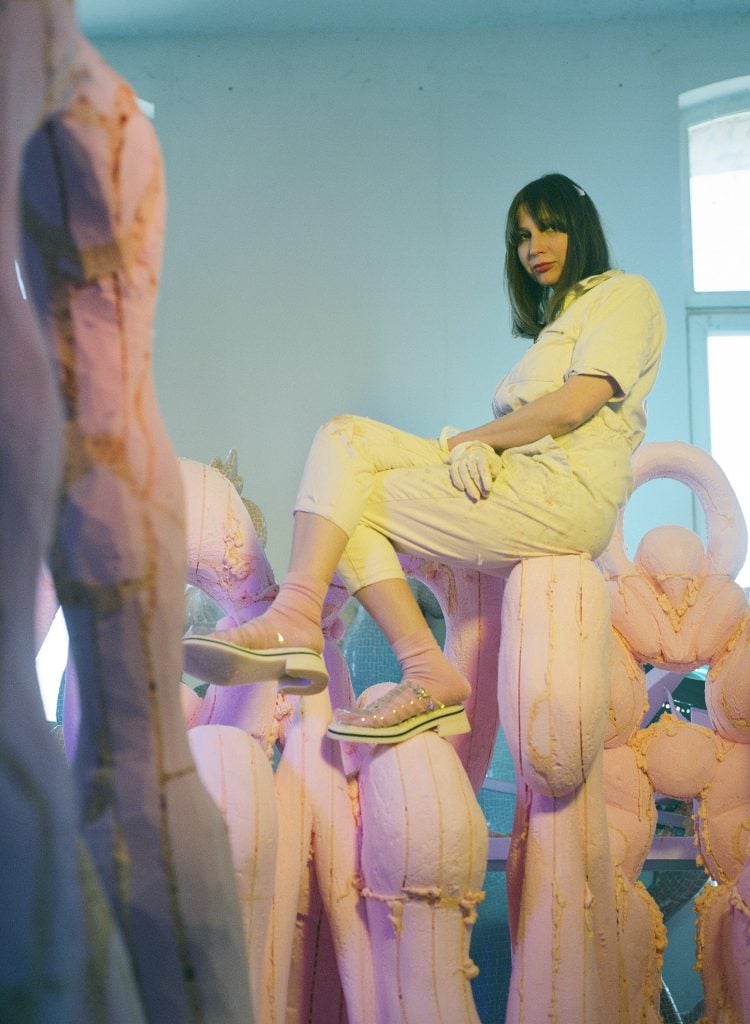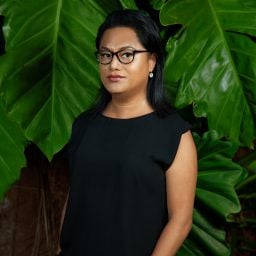Each week leading up to the 59th Venice Biennale in April, Artnet News brings you into the studio of an artist as they prepare for acclaimed exhibitions in and around the Giardini.
Artist Zsófia Keresztes makes sculptures that are both soft and sharp. Her bulbous forms, which are carved with styrofoam and fiberglass before being meticulously overlaid with small hand-cut glass tiles, almost appear like alien fleshy entities. They also recall old world public spaces, like city square water fountains or public memorials.
Born in 1985 in Budapest, Keresztes seems to have a distinct relationship to analogue and material processes, but her sculptures, when they are done, look like they could have cropped up in virtual landscape. For her participation in the 59th Venice Biennale, where she will represent Hungary, expect to be transported to a liminal imaginative place between physical and digital with Keresztes’s exhibition “After Dreams: I Dare to Defy the Damage.”
We spoke with the artist about how she is preparing for the major exhibition.
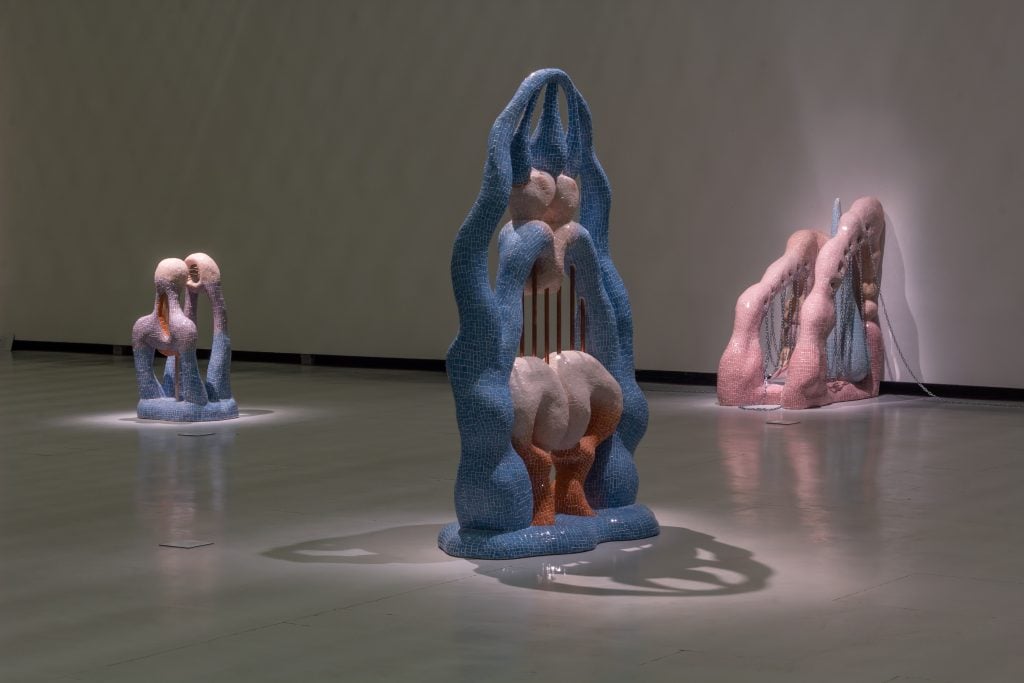
Zsofia Keresztes at the Contemporary Art Center, Vilnius, for the Baltic Triennial 14 “The Endless Frontier.” Photo: Ugnius Gelguda.
What is the most indispensable item in your studio and why can’t you live without it?
My cutter knife, with which I carve all my sculptures and also use it for other work processes. This often leads to a huge layer of glue accumulating on it. Sometimes, as part of my break, I peel off these layers before I start work on a new piece.
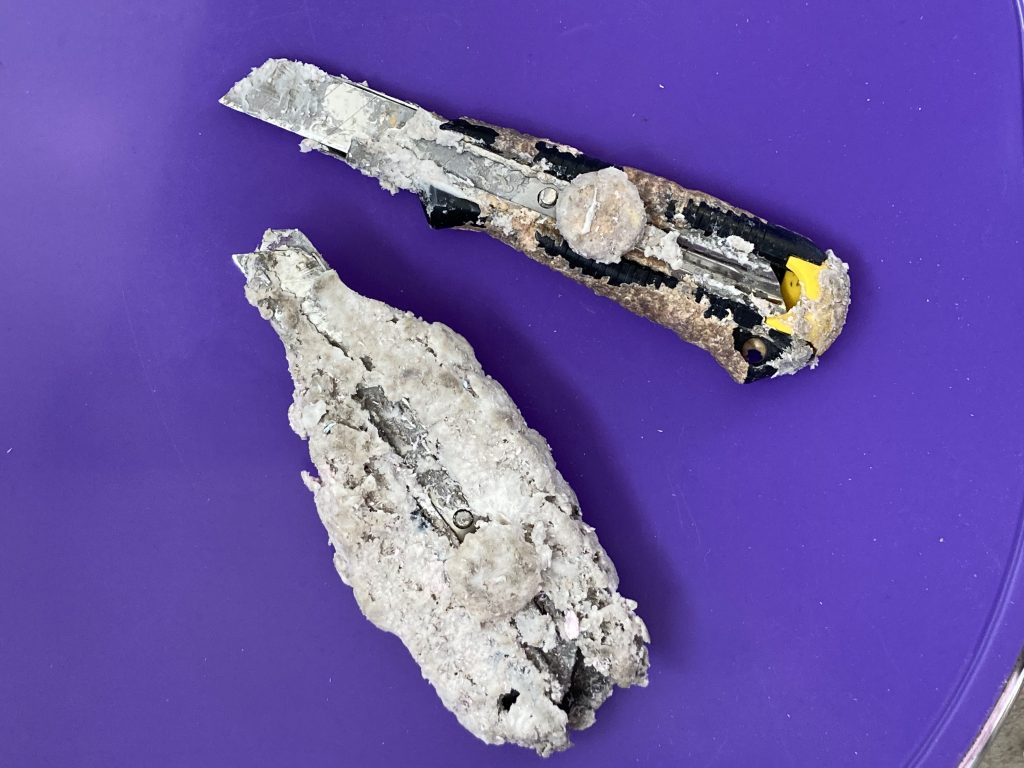
Photo: Zsófia Keresztes.
When it comes to planning for your country’s pavilion, what is the studio task on your agenda this week that you are most looking forward to?
Today happens to be the day when we start to put mosaics on the largest sculpture that will be featured at the pavilion. We have three weeks to finish it, which is quite a challenge.
Can you send us a picture from your last site visit to Venice? What was the main to-do of that trip?
Our last trip was in February 2021, when we went to Venice for a site visit with the Ludwig Museum’s staff and the exhibition’s curator, Mónika Zsikla. Our main task was to try to imagine placing the sculptures in the pavilion’s space, which back then only existed as sketches.
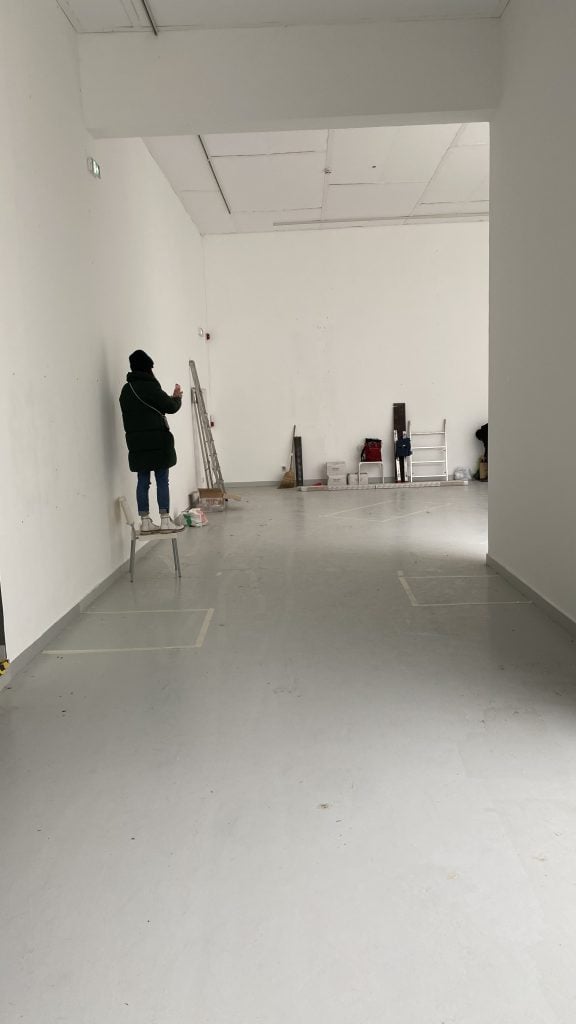
Photo: Zsófia Keresztes.
What has been the biggest challenge so far, as you prepare for the Venice Biennale?
For me, the largest challenge was cooperating with others, as until now I had worked alone on most of my projects. This was the first occasion I collaborated with assistants on the sculptures, something that would have been unimaginable for me previously.
Is there a picture you can send of your work in progress?
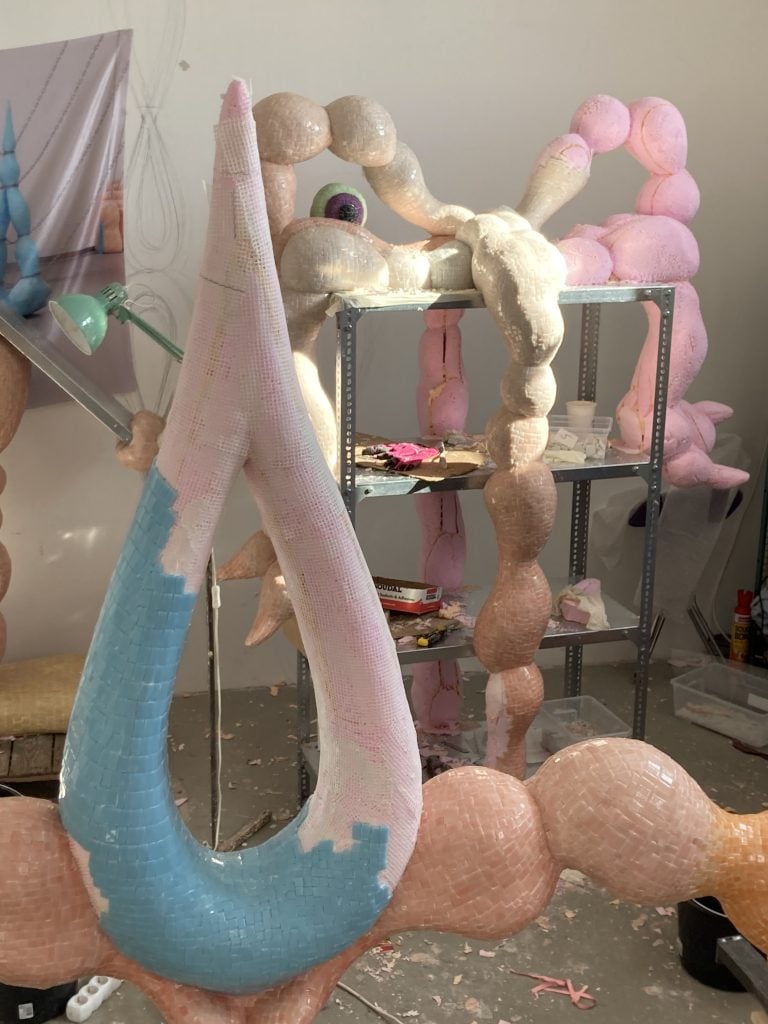
Photo: Zsófia Keresztes.
When you feel stuck while preparing for a show, what do you do to get unstuck?
In the last year, I never got stuck due to lack of inspiration, but rather because of mental and physical exhaustion, or anxiety over deadlines. When this happens, it can help to break out from this state even just for a few minutes. Lately, I achieve this, for example, by watching videos of seals when I feel like I might break under the pressure of all the things I need to do. I find the sight of these rolling and glistening bodies very relaxing.
What trait do you most admire in a work of art? What trait do you most despise?
I like artworks that have their creator’s “imprint” on them and that have imperfections (but not due to clumsiness).
What are you looking at while you work?
This changes daily, but currently this is what I see:
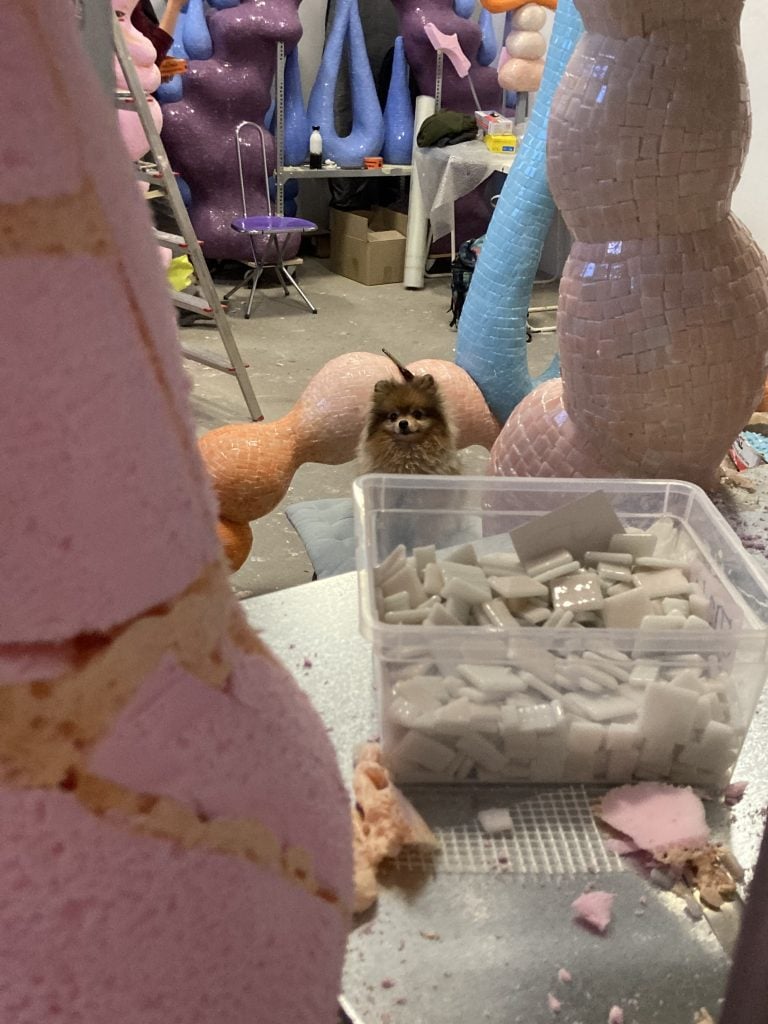
Photo: Zsófia Keresztes.
What is one film, piece of writing, or other artwork that inspired you most in preparing for Venice?
Often I can only realize what my specific inspirations and references are after a work is finished. I find it very entertaining when I see the pieces fall into place. For example, the inspiration for one of my sculptures made for the biennale was Watteau’s Pierrot painting. I’ve been interested in this character for a long time, but I wasn’t thinking of it while making the sculpture; I only realized this analogy after I finished it.
What’s your favorite hideaway to eat, drink, or take a break in Venice?
When I last visited Venice, we only had a very small amount of free time. On the last day with Mónika (the curator of the Hungarian pavilion) we had enough time to visit the medical museum located in the Grande di San Marco building, as we are both interested in anatomy. It was exciting to get lost among its countless illustrations and medical equipment in a quiet, peaceful Renaissance environment.
